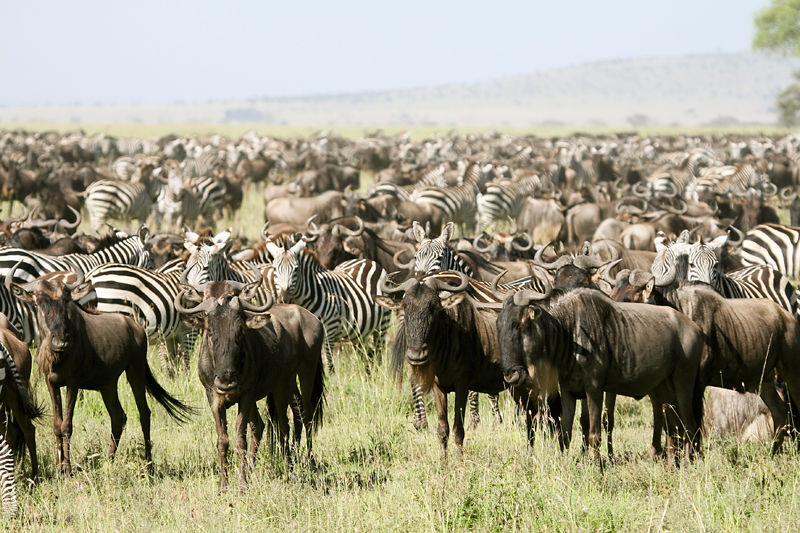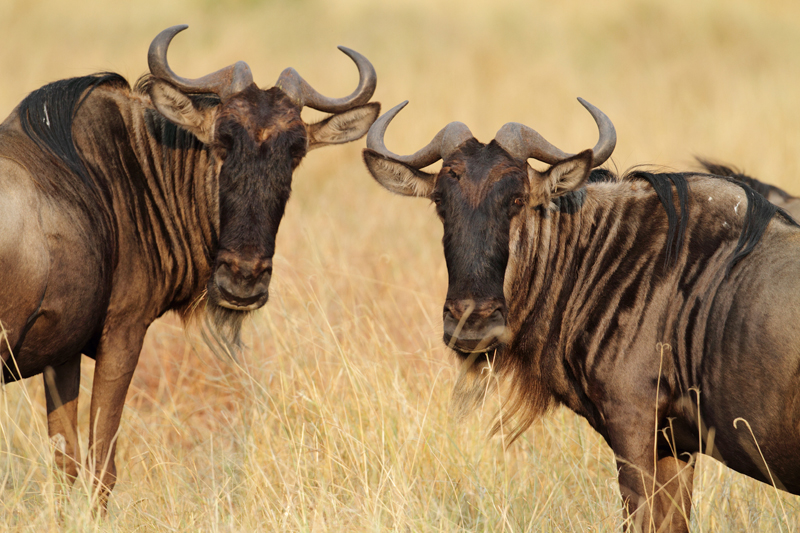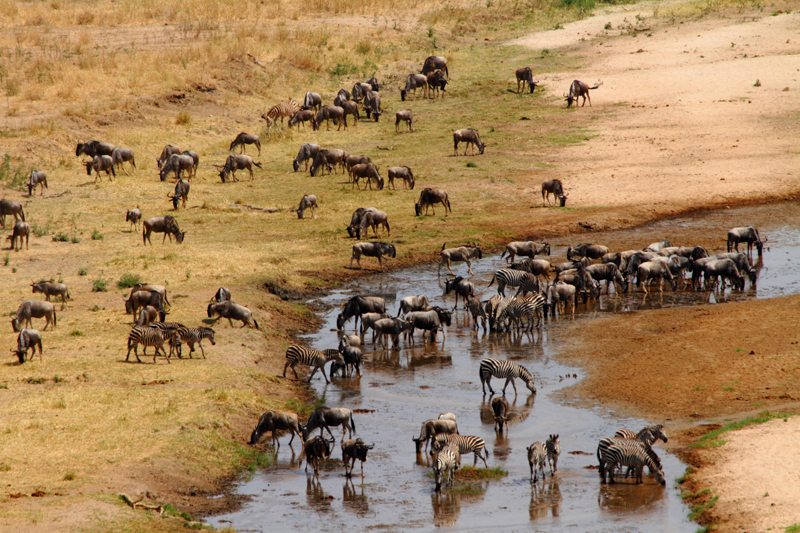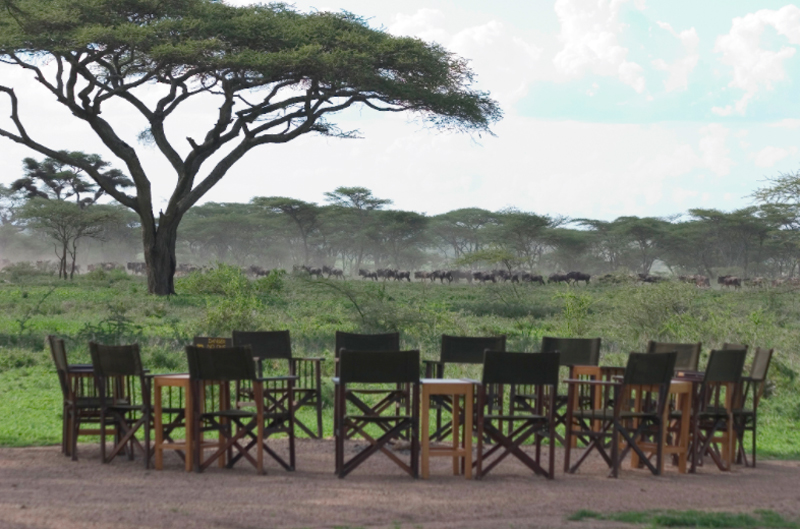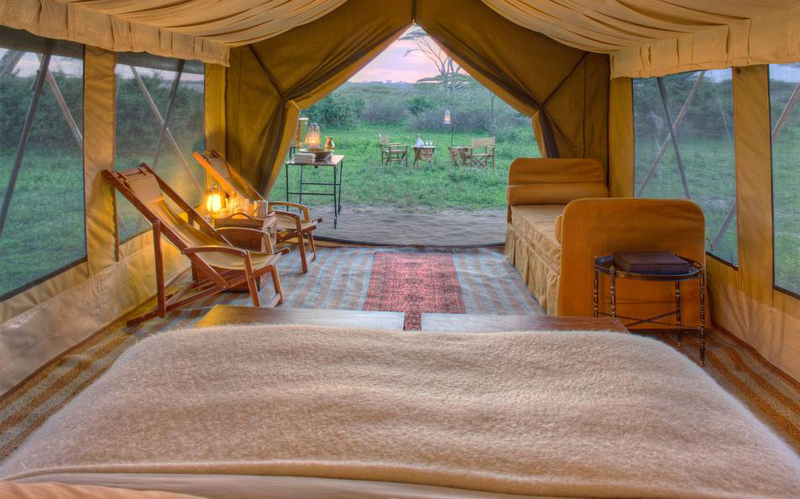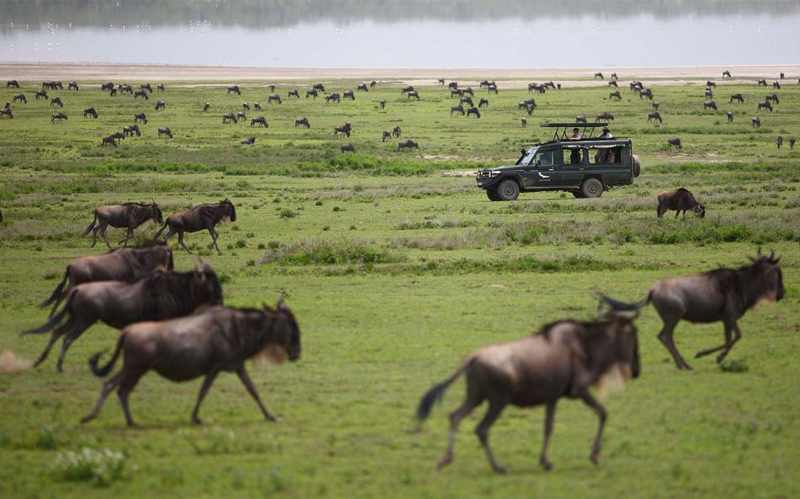The Serengeti migration is one of the world’s most spectacular mass movements of wildlife. The migration comprises thousands of wildebeest moving in a circular pattern on an annual basis. The wildebeest are accompanied by herds of zebra, Thompson’s gazelle, eland, impala and other smaller groups of plains game.
Wide open plains are literally littered with wildebeest, and waiting in the wings during the breeding season, are a splattering of powerful predators. The timing of the migration is dependent on rainfall patterns, but annually, wildlife movements and timings are semi-predictable. So why do wildebeest and other game migrate? We speculate it is because plains game seek fresh grazing grounds and access to pristine water.
The migration takes place over Tanzania’s Serengeti plains in the south and the Maasai Mara up north in Kenya. While there are hundreds of thousands of wildlife on the move, there are periods of time when they are sedentary, which means a variety of sightings in different regions.
The most photographed and iconic images of the migration happen when the herds attempt to cross the Mara River, which sees huge beasts struggling on the banks and jostling to get across the flowing waters. There are times of the year when the herds give birth and times when the herds splinter. If you’re planning a safari to the Serengeti for the migration, you might want to make use of the below timeline and do plenty of other research before you travel to ensure you’re in the right place at the right time.
Here is a rough timeline of the Serengeti Migration:
Nov – Dec: This is the beginning and end of the migration route. November sees the start of the rains and the herds are all in the northern part of the Serengeti region. December is when the herds become twitchy. There is still rain but less of it, so herds begin to migrate southwards towards the open plains.
Jan – March : This is the time when the herds are sedentary and have settled somewhat in the Ngorongoro Conservation Area and spill into the Serengeti National Park. This time of year, the grass and grazing conditions are ideal and there’s an abundance of water. It’s not only wildebeest dotted across the open plains, but also dazzles of zebra and other game.
Because herds are sedentary and there’s a wealth of food resources, it’s the ideal time for the females to give birth. Birthing normally happens during February, which means there are plenty of predators about. As heartbreaking as it is, this is the perfect time to see predator action.
Accommodation options in this area :
Positioned on the lower slopes of Sasakwa Hill, Singita Serengeti House is a luxurious exclusive-use house located in the western corridor of the Serengeti National Park. For something more affordable, we recommend the rustic and perfectly placed Nduti Safari Lodge in the centre of the Serengeti Plains.
April – May : This is the time of the year when the herds slowly become more widespread and they’re not so tightly woven together. They move west and back up north again – north of the Serengeti National Park. This time of year is notoriously rainy.
Accommodation options in this area :
The Serengeti Serena Safari Lodge is the ideal place to stay. Accommodation is luxurious, unique and offers views over the central Serengeti. The lodge screams traditional Africa with a flair for the modern.
June – August : This is quite a frenzied and harrowing time for the herds. They all seem to come together and are far less spread out than in previous months. There is a halt in the migration on the south side of the Grumeti River because of the narrowing tracts of land and channels. The crocodiles lie in wait for their “meals on wheels” to attempt to cross the river.
This happens around June time and we’ve heard that the crocodiles in these waters are somewhat larger than their counterparts! The herds begin to move up towards Mara River, which forms part of the Mara Region in Tanzania and Narok County in Kenya. The Mara River is where dramatic landscapes form the backdrop for many postcard perfect images of the Serengeti migration.
Accommodation options in this area :
Serengeti Under Canvas is a migratory camp, and tent locations are based on the movements of the migration as it traverses the Serengeti and Masai Mara. This camp comes highly recommended and offers close-up action in each of the high traffic areas.
September is the time of year when the herds spread to the Mara River which flows in the northern Serengeti and the Masai Mara Game Reserve. This is the last time of year to see the concentrations of wildebeest moving across the river. Here you will find that the herds will splinter slightly and begin to move south, while others at the back of the herd still attempt to cross.
October – November : The migration is starting to work its way back to Tanzania so there will be plenty to see in the southern Maasai Mara in Kenya and in Northern Tanzania.
And so the cycle begins again!

